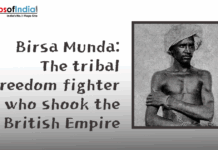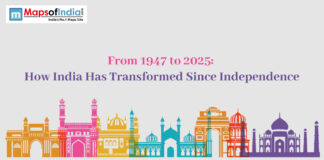Classical dance styles, town life and spiritual values are core to India’s unique mix of traditions. All around India, from the southern temples to the courts in the North, dance has served more than for enjoyment — it shares stories, expresses faith and reflects the nation’s culture. For a very long time, Indian classical dance has grown, welcomed changes and remained authentic as it adapted. Here, the blog investigates how classical dance from India has evolved and mattered over the centuries.
Ancient Beginnings: Dance as a Spiritual Offering
Those who wrote the Natyashastra, around 200 BCE to 200 CE, are said to be the oldest source for information on dance in India. It set the base for all classical dance styles by defining the rules for movement, expression and music. The Natyashastra holds that dance was not just an artistic act, but an offering to the gods, meant to develop a true bond between actors and viewers.
Dance was important at religious ceremonies in every temple in India. Women in the Devadasi practice lived to dance and serve their spiritual leaders, and this tradition peaked in the era. Carvings from the Chola and Pallava dynasties in Tamil Nadu illustrate that dance was important, by showing elaborate scenes of gods and singers dancing and playing instruments.
The Rise of Regional Styles: Diversity in Unity
As India changed culturally, distinctive dance forms appeared in most regions, shaped by the unique traditions there.
- Bharatanatyam, from Tamil Nadu is marked by how accurate and geometric the movements are, the various expressive facial gestures and quick footwork. It started with the ancient Devadasi tradition and later became a structured, solo way of dancing.
- Kathak, which was most popular among royal courts in North India and especially under Mughal rule, mixes storytelling with complex twists and steps. Persian traditions can be seen in its ballet’s nice postures and complex patterns.
- Odissi, from Odisha, gets its trademark body and position ideas from the Konark and Puri temple style.
- Originally, men from the Brahman caste in Andhra Pradesh represented the dance-drama called Kuchipudi, but over time, it became a mixture of masculine power and feminine elegance performed by solo dancers.
- The dance-drama Kathakali, from Kerala, is distinguished by its elaborate makeup, bright costumes and bigger-than-life characters based on the epics.
- The Manipur region’s religiosity is seen in Manipuri, where soft and graceful circular movements play a main role.
- Mohiniyattam is famous for its graceful, fluid movements and lovely feminine appeal which both distinguish it and make it unique.
Indian classical dance demonstrates its great diversity, depth and unity by including styles from different regions while sharing a similar style.
Dance and Devotion: The Bhakti Movement
During the Bhakti period which occurred in India during the 7th to 17th centuries, the people grew even more attached to dance. Many devotional songs were composed by saints and poets like Jayadeva, Chaitanya Mahaprabhu, Meera Bai and others and the music was usually accompanied by dance. At that time, people used dance to show their personal emotions, stepping across caste and social boundaries.
In Tamil Nadu, the Alvars and the Nayanars created structures for dancers to dance to sacred poetry through abhinaya. North India includes Krishna Leela and Ras Leela as a main focus in Kathak performances. Manipuri dance took much of its inspiration from the Vaishnava faith, mainly in the way it represents the special relationship between Radha and Krishna.
Colonial Interruption and Cultural Resilience
The arrival of British colonial rule in India in the 18th and 19th centuries had a major negative effect on classical dance. Those in charge of colonies usually interpreted these traditions based on the views of Victorian morality, sometimes considering them wrong or outdated. It was the Devadasi system that was most severely affected, which eventually led to temple dance traditions lessening in importance.
Still, Indian culture proved to be resilient. It was Rukmini Devi Arundale, Uday Shankar and Balasaraswati who started the cultural renaissance movement in the early 20th century. They put a lot of effort into reshaping classical dance, which made it a respected and celebrated form of art today. Because of their work, dancing became associated not only with temples and royal households but also with the entire nation.
Indian Classical Dance in Independent India
After independence, India started a cultural movement that celebrated its Indian classical heritage. In Chennai, Kalakshetra and in Delhi, Kathak Kendra became important centers for intensive learning and new developments in dance. Festivals and conferences highlighted the range of dance genres and encouraged connection between artists and their audiences.
Because of government support from the Sangeet Natak Akademi and ICCR, classical dance was sustained and popularized across India and abroad. With Indian dancers performing in many countries, dance helped spread knowledge about the nation’s unique traditions.
The Global Footprint of Indian Classical Dance
Indian classical dance is now watched by people across the globe. Yamini Krishnamurthy, Birju Maharaj, Sonal Mansingh and Alarmel Valli have a global following and have been honored for the art they perform.
International festivals, workshops and online spaces have spread Indian classical dance to more people. Many hopeful dancers from different cultures are adopting these types, making all of them want to be authentic, respectful and creative.
Contemporary Trends: Fusion and Innovation
Even though keeping their traditions is important, Indian classical dances have also adapted to more contemporary tastes. Modern artists use old techniques and ideas to speak about gender, identity, justice and environmental concerns.
Blending various styles from India and around the world has produced new productions that try to stretch the borders of classical dance. Designers, directors and performers often use multimedia, new sound and theatrical techniques, showing that Indian arts are always progressing.
The Spiritual and Cultural Significance
Still today, Indian classical dance is maintained by its spiritual core. Dance remains important for people as it lets them reach greater heights and connect with themselves and the heavens. Bride shows the adventures and accomplishments of gods and heroes with nritta (pure dance), nritya (expressive dance) and natya (dramatic dance).
And, by doing so, Indian classical dance celebrates the culture and speaks for those who pursue it. It urges viewers to look into the common feelings of love, loyalty, courage and kindness.
Conclusion
Indian classical dance heritage demonstrates the Indian people’s strong will, creative spirit and their focus on religion. The nation’s beliefs and heritage are carried on, today as back then, through the dance’s journey from ancient temples to the biggest festivals. Going forward, we all need to protect and honor this heritage, so the moves of our ancestors remain a source of inspiration for others.
Its beats, movements and tales remind us that art helps us relate to one another and to our own inner selves.





